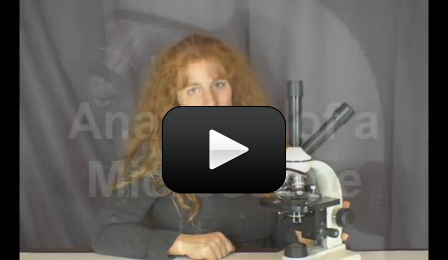Nose? Objective? Stage? What kind of class is this? Well, some of the names may sound a bit odd, but this video will show you what they are and how they are used. As you watch the video, touch the corresponding part of your microscope to get a feel for how it works.
NOTE: Be very careful NOT to raise the stage too high or you’ll crack the objective lens! Always leave a space between the stage and the lens!! Anytime you use the coarse adjustment knob, always look at the stage itself, NOT through the eyepiece (for this very reason). When you use the fine adjustment knob, that’s when you look through the eyepiece.
More questions to ask:
1. After you’ve learned the different parts of the microscope, swing around and teach it to a nearby grown-up to test your knowledge. See if you can find all these parts: eyepiece, base (legs), objective lens, eyepiece, diaphragm (or iris), stage, fine and coarse adjustment knobs, mirror/lamp, nose.
2. Show your grown-up which parts never to touch with your fingers.
3. What’s the proper way to use the coarse adjustment knob so you don’t crack the objective lens?
Care and Cleaning
1. Pick up the microscope with two hands. Always grab the arm with one hand and the legs (base) with the other.
2. Don’t touch the lenses with your fingers. The oil on your fingers will smudge and etch the lenses. Use an optical wipe if you must clean the lenses. Steer clear of toilet paper and paper towels – they will scratch your lenses.
3. When you’re done with your scope for the day, reset it so that it’s on the lowest power of magnification and lower the stage to the lowest position. Cover it with your dust cover or place it in its case.


To clean the lenses on your microscope, you will need lens cleaning brush and lens cleaning spray or isopropyl alcohol. These are available from Amazon and stores that sell camera supplies.
Be sure to never wipe the lens with tissues or paper towels. That could scratch the coatings on the lenses. Never touch the lenses with your fingers. That will leave oily fingerprints, which can be difficult to remove.
Use the lens cleaning brush lightly brush away any dust. Then spray a little bit of lens spray (or use isopropyl alcohol) onto a cotton swab. Using the moist tip of the cotton swab, rub the lens in a circular motion. Don’t wipe the lens with a cloth. The alcohol will evaporate on its own.
How do you clean the objective lenses and eyepiece lense?
Thank you!
Thanks!
You can actually use a plain old cloth, but it has to be completely clean (without any chemicals so it doesn’t leave lint or residue). Disposable lens tissues are great because they are clean, cheap, and you discard them after each use. Microfiber are lint-free cloths that you need to keep clean, so store them in something like a zipper baggie. And yes, when you’re done, always clean up the oil by wiping the outer edges clean first, because oil attracts dust and dirt particles. Here’s a good place to learn about how to properly care for your microscope.
If you are doing oil immersion, do you have to clean the lens every time you are done? Also, is an optical wipe the same thing as a microfiber cloth? Thanks!
It is not blurry any more! My computer probably needed an update or something and I think my Dad might of done one.
Hmmm… it wasn’t blurry over here. Was there something in particular you wanted to see on the microscope but couldn’t? What happens if you try a different computer?
This video is very blurry but the other videos are all fine. Can you check it? I have a microscope but it has awful instructions so I need a video like this to help me!